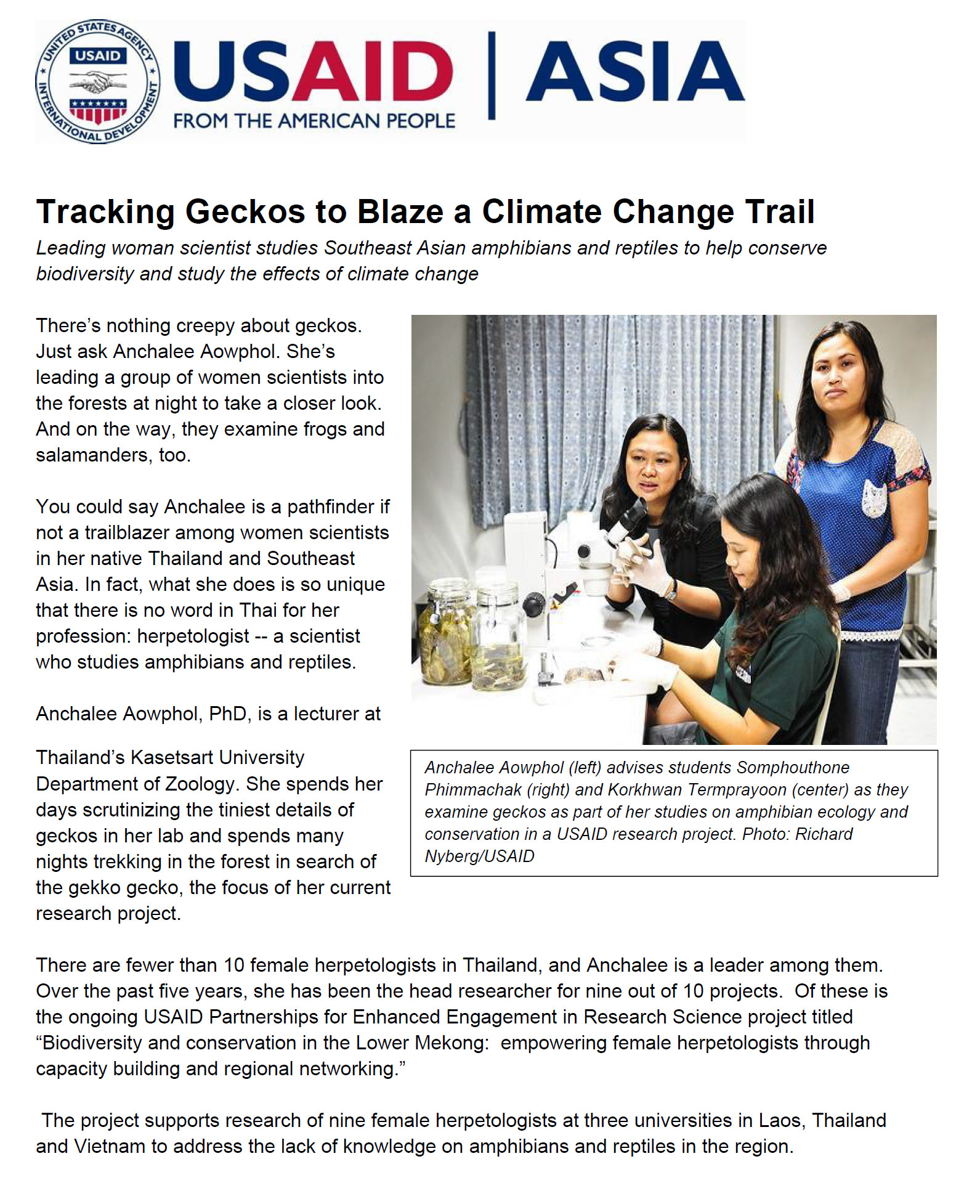There’s nothing creepy about geckos. Just ask Anchalee Aowphol. She’s leading a group of women scientists into the forests at night to take a closer look. And on the way, they examine frogs and salamanders, too.
You could say Anchalee is a pathfinder if not a trailblazer among women scientists in her native Thailand and Southeast Asia. In fact, what she does is so unique that there is no word in Thai for her profession: herpetologist -- a scientist who studies amphibians and reptiles.
Anchalee Aowphol, PhD, is a lecturer at Thailand’s Kasetsart University Department of Zoology. She spends her days scrutinizing the tiniest details of geckos in her lab and spends many nights trekking in the forest in search of the gekko gecko, the focus of her current research project.
There are fewer than 10 female herpetologists in Thailand, and Anchalee is a leader among them. Over the past five years, she has been the head researcher for nine out of 10 projects. Of these is the ongoing USAID Partnerships for Enhanced Engagement in Research Science project titled “Biodiversity and conservation in the Lower Mekong: empowering female herpetologists through capacity building and regional networking.” The project supports research of nine female herpetologists at three universities in Laos, Thailand and Vietnam to address the lack of knowledge on amphibians and reptiles in the region.
“We are special women. We study geckos, salamanders and frogs,” she said. “Most people don’t see their significance while we believe amphibians and reptiles are very important indicators of our ecosystem and climate change.”
The Lower Mekong is home to a rich diversity of amphibians and reptiles that are predators and prey in the ecosystem. In Thailand alone there are 169 species, but only 12 are listed as prohibited species. Unfortunately, many of these species are facing extinction because of rapid deforestation driving them away from their normal habitat, over-harvesting and wildlife trafficking.
“House geckos control insects in your houses and you can immediately notice the increasing number of insects once they are gone. So you can imagine the impact in broader ecology system when amphibians and reptiles are threatened,” said Anchalee.
Working in this field, however, has never been easy for Anchalee and her fellow women team members. They have to drive across the country every month, trek through and stay in the dry evergreen forests alongside forest rangers. Her team works mainly at night when amphibians are active. Many times they have to escape from elephants and other large wildlife and poisonous animals.
“My father always asks why I have to do this as it does not seem safe for women. For me, I just love teaching and conducting research. It is behind-the-scenes work to support other people to grow and contribute to a bigger picture of biodiversity conservation,” she said.
In this USAID-funded research science project, Anchalee coaches three female students at her university. One is Somphouthone Phimmachak, a PhD candidate from Laos who will be her country’s first female herpetologist when she returns home.
“I’m learning and absorbing everything from Anchalee. She always gives her full support and inspires us that women can go very far in this field,” said Somphouthone. “She is a great teacher, and I want to be like her.”








Comment
Make a general inquiry or suggest an improvement.